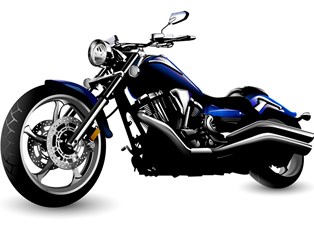Motorcycle insurance regulations vary depending on your state of residence. Motorcycle insurance coverage is determined by many factors including the value of the motorcycle, seasons, common road conditions, your net worth, as well as traffic circumstances in the areas you ride. Therefore, adequate coverage in one state may not be adequate in another.
1. Bodily Injury and Property Damage Liability
This type of insurance covers you (up to certain limits) if you are at fault for an accident that injures another person or if the accident causes damages to another person’s property. The cost of this motorcycle insurance coverage varies. The minimum amount of coverage in some states is about $15,000 per person and $30,000 per accident. A higher limit for the coverage is $250,000 per person and $500,000 per accident.
2. Comprehensive and Collision
This policy covers a motorcycle owner for repairs and replacement of the motorcycle in an accident or in the event of theft. It allows policyholders to choose deductible amounts that they agree to pay in claims. The insurance company covers the remaining repair and replacement costs according to the terms of the policy and up to the limits of the coverage.
One of the most important things to remember when insuring your motorcycle is to take a policy equal to its value. The insurance company will determine the value of the motorcycle while factoring in depreciation over time. Therefore, it is important that motorcycle owners looking for comprehensive and collision insurance coverage to understand how insurers determine value in the event of an accident. For example, if your motorcycle has custom parts, include the insurance for the custom parts when initiating insurance.
3. Underinsured and Uninsured Motorist
In the event of an accident, an injured third party may either have no insurance or insufficient insurance. Underinsured and uninsured motorcycle insurance covers damages even if the policyholder is not at fault and the person at fault is legally liable for the damages. State regulation of this type of coverage varies. The damages incurred in motorcycle accidents can be high.
4. Medical Payments
This type of motorcycle insurance covers the expenses of necessary medical care incurred as a result of a motorcycle accident. The cover for medical expenses is made regardless of who was at fault. However, this insurance policy is limited by time and to a specific dollar amount. In some states, motorcycle medical coverage only applies when all other medical insurance coverage is exhausted.
5. Roadside Assistance
This type of coverage is also known as towing or trip interruption coverage. It provides cover for small roadside repairs such as a flat and towing, to the nearest, approved repair company. Motorcycle insurance is mandatory in most states. The requirements for this type of insurance are similar to requirements for vehicles. When purchasing motorcycle insurance, it is important to consider the age, size, and power of the motorcycle.



